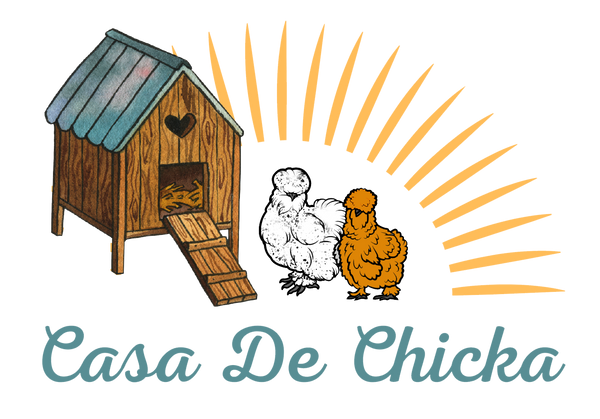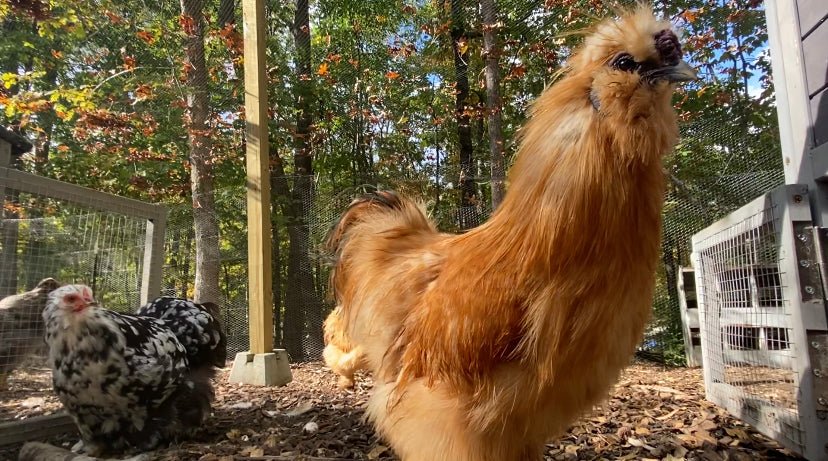Chickens aren't just farm animals; they're increasingly popular as quirky, affectionate pets. Each breed comes with its own personality, quirks, and charm. If you're considering a feathered friend for your family, look no further! We've compiled a list of the top 6 chicken breeds that are perfect for pet owners. Let’s meet these backyard buddies and explore fun activities and enrichment ideas for your new companions.
- Silkie Chickens: The Enchanting Puffs
- Origin and History: Silkies have roots in ancient China, known for centuries for their unique fur-like feathers.
- Personality: Beyond being friendly, Silkies are often regarded as nurturing and can even mother other birds' eggs.
- Appearance: They are small, with a distinctive poof of plumage on their head, and come in various colors like white, black, and blue. Their feathers lack barbicels, giving them a silky texture.
- Egg Production: They lay small, cream-colored eggs. While not prolific layers, they more than make up for it with their mothering qualities.
- Health and Care: Silkies require protection from the wet and cold due to their unique feathers. They are also susceptible to predators and need secure housing.
- Buff Orpingtons: The Fluffy Companions
- Origin and History: Developed in Orpington, Kent, England, in the late 19th century, these birds were bred for both egg-laying and meat production.
- Personality: They are known for being incredibly docile and affectionate, often seeking attention from their human companions.
- Appearance: They have a heavy, broad body with dense feathering in a beautiful golden-buff color.
- Egg Production: A reliable layer, the Buff Orpington produces a good number of large, brown eggs annually.
- Health and Care: Their dense feathering requires regular checks for parasites, and they need ample space to prevent obesity.
- Plymouth Rock: The Reliable Backyard Friend
- Origin and History: Originating in the United States in the mid-19th century, Plymouth Rocks were one of the foundations of the American poultry industry.
- Personality: Known for their friendly and relaxed nature, they're great with children and other pets.
- Appearance: They have a striking barred black-and-white plumage and a single comb.
- Egg Production: They are consistent layers, producing large brown eggs.
- Health and Care: Plymouth Rocks are hardy birds but do require standard chicken care, including parasite control and safe housing.
- Cochin Chickens: The Gentle Fluff Balls
- Origin and History: Originally from China, Cochins were introduced to Europe and America in the 1840s and quickly became popular for their appearance and temperament.
- Personality: They are known for being incredibly friendly and calm, often enjoying being petted and held.
- Appearance: Cochins are large, with an abundance of soft, fluffy feathers, and feathered feet.
- Egg Production: They lay a fair number of medium-sized brown eggs.
- Health and Care: Their feathered feet require regular checks to keep them clean and healthy. Cochins can be prone to obesity, so a well-managed diet is important.
- Brahma Chickens: The Feathered Gentle Giants
- Origin and History: Developed in the United States from birds imported from China, Brahmas were one of the largest breeds and were a mainstay in the US meat industry in the 1800s.
- Personality: Despite their size, they are known for their calm and friendly demeanor, often described as gentle giants.
- Appearance: They are large birds with feathered feet, a pea comb, and come in light, dark, and buff varieties.
- Egg Production: Brahmas are decent layers, especially in winter, producing large brown eggs.
- Health and Care: Due to their size and feathered feet, they need spacious and clean living conditions to prevent health issues.
- Easter Eggers: The Whimsical Egg Layers
- Origin and History: Easter Eggers are not a true breed but a type of chicken that carries the gene for blue or green eggshell color.
- Personality: They are known for their friendly and curious nature, making them great interactive pets.
- Appearance: Easter Eggers vary widely in appearance but are most loved for their colorful eggs which can be blue, green, or even pinkish.
- **Egg
Production:** They are prolific layers, often producing a good amount of medium to large eggs in various shades.
- Health and Care: Easter Eggers are hardy and adaptable to various climates. They require standard chicken care but are relatively low-maintenance.
Enrichment and Activities for Each Breed:
- Silkie Chickens:
- DIY Playground: Create a safe playground with ramps and gentle obstacles. Silkies love to explore but can't fly well, so keep everything low to the ground.
- Grooming Sessions: Regular grooming not only keeps their feathers in great condition but also serves as a bonding activity.
- Buff Orpingtons:
- Gentle Handling Practice: Teach them to be comfortable with being held and petted, reinforcing their naturally docile nature.
- Treat Hunts: Hide treats in their enclosure to encourage natural foraging behaviors.
- Plymouth Rock:
- Leash Training: These friendly birds can be taught to walk on a leash, making for fun outdoor adventures.
- Interactive Toys: Introduce toys that they can peck at or push around, keeping them entertained and active.
- Cochin Chickens:
- Dust Bath Delight: Build a luxurious dust bath area with fine sand and wood ash for them to indulge in.
- Feather-Friendly Perches: Install various perches and platforms for them to roost on, keeping their feathers clean and fluffed.
- Brahma Chickens:
- Simple Agility Courses: Set up a basic agility course suitable for their large size, encouraging them to exercise and play.
- Companion Walks: Brahmas can enjoy supervised walks around the garden, exploring and foraging as they go.
- Easter Eggers:
- Colorful Foraging Area: Plant a garden with edible flowers and herbs that they can peck at and enjoy.
- Puzzle Feeders: Use puzzle feeders to stimulate their intelligent and curious minds.
Activities to Do with Your Pet Chickens:
- Backyard Exploration: Supervised free-ranging in your backyard allows them to forage, explore, and exercise.
- Chicken Agility Training: Believe it or not, chickens can be trained! Set up a simple agility course with ramps, hoops, and tunnels to challenge and entertain them.
- Cuddle Time: Many chickens, especially Silkies and Buff Orpingtons, enjoy being held and stroked. Set aside time for gentle interaction, which can be relaxing for both you and your feathered friend.
- Photo Shoots: With their unique appearances, pet chickens make great models for fun photo sessions. Capture their personality and share their antics on social media.
Creating a Chicken-Friendly Garden:
- Edible Plants: Plant a chicken-friendly garden with safe and edible plants like kale, Swiss chard, and herbs. Your chickens will enjoy the snacks, and you'll enjoy the fresh produce.
- Dust Bath Areas: Create a designated dust bath area with sand and soil. Dust bathing is essential for their health and a favorite pastime.
- Shaded Resting Spots: Provide shaded areas with bushes or small trees for your chickens to rest and stay cool on hot days.
Health and Care for Pet Chickens: Keeping chickens as pets means being responsible for their health and well-being. Regular health checks, a balanced diet, clean water, and a safe, clean coop are essentials. Be aware of common poultry ailments and have a plan for veterinary care if needed.
Chickens as pets offer a unique blend of companionship, entertainment, and even a supply of fresh eggs. Breeds like Silkies, Buff Orpingtons, Plymouth Rocks, Cochins, Brahmas, and Easter Eggers each bring their special charm to a backyard flock. With the right care, enrichment, and a bit of creativity, your pet chickens can be a source of joy and a clucking good addition to your family.

